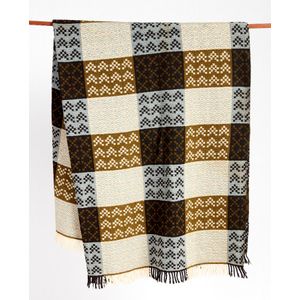Colonial Cedar Scotch Chest with Bramah Locks and Campaign Handles
You must be a subscriber, and be logged in to view price and dealer details.
Subscribe Now to view actual auction price for this item
When you subscribe, you have the option of setting the currency in which to display prices to $Au, $US, $NZ or Stg.
- Bracket Feet - On bracket feet the corner edge is square and joined by a mitre to its partner on the opposite angle. The inner edge is usually shaped or scalloped. Bracket feet were first introduced in the early 18th century and used until c. 1830 and are found on carcase furniture such as chests, cabinets, bookcases and bureaux.
Ogee bracket feet, a variation on straight bracket feet, have the outside edge forming an "S" shaped curve with the top bulging outward and the bottom turning inward.
On splayed bracket feet, the exterior edge curves outward. - Campaign Furniture - Most of the campaign furniture on the market is associated with the time of the British Empire in the 18th and 19th centuries when there was a high demand from military officers, administrators and colonists.
Campaign furniture is demountable, through clever use of wooden screws and sometimes metal hinges, so that it can disassembled and then packed into lots of manageable size for ease of movement by ship or animal between postings or camps. - Frieze - An architectural term denoting the flat, shaped or convex horizontal surface of furniture, between the architrave and the cornice, usually found on a cabinet or bookcase, or on desks and tables where it may include drawers, the area between the top and the legs. In ceramics, the term refers to the banding, of usually a repeating pattern, on the rims of plates and vases.
- Bramah Locks - A patented high security high quality lock, invented in 1784 by Joseph Bramah, and designed a lock mechanism operated by a tubular key, of such complexity and security, that he put it in his shop window and offered a reward of 200 guineas to anyone who could open it. In 1787 Joseph Bramah?s lock patent was granted with 479,001,600 keys required to open it under all its variations.
Genuine Bramah locks are stamped with the makers name on the top face of the lock, and are easily recognisable because the circular brass barrel of the lock, also forms the escutcheon, and protrudes front the front to which it is fitted.
Bramah locks were used by the best furniture makers of the period, such as Gillows, most commonly from about 1820 onwards, the use of the lock being restricted presumably due to their cost. If an item of furniture is fitted with a Bramah lock, it is generally an indication it is a quality piece.
This item has been included into following indexes:
Visually similar items

A gentleman's 18ct yellow and white gold diamond ring, six princess cut diamonds, 0.60ct in total, colour G, clarity VS. Total weight 14grams. Valuation supplied.

Manatunga (U.E.B.T Textiles Dunedin), travel rug, with a tukutuku panel pattern in sky blue, black and olive, original Woolmark label attached, 190 x 140 cm

A retro 1960's G-plan 'Fresco' sideboard, from the 'Danish' range in teak veneer, with afromosia hardwood recessed door handles and legs, the four central drawers flanked by two pairs of cupboards. The 'Fresco' range was designed by V. B. Wilkins and first

A silky oak desk box, 23 x 38 x 14 cm
